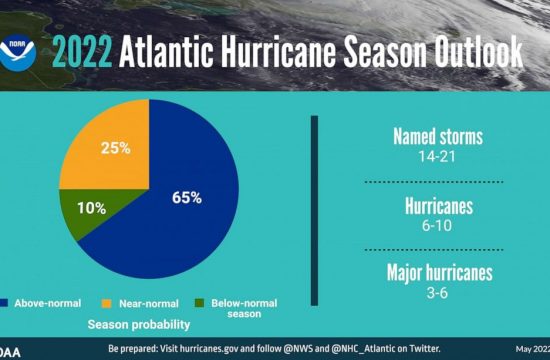A prolonged period of torrential rain and storm surge will be possible.
Another major storm system is expected to hit the Gulf Coast next week in what’s been a hectic hurricane season for the region.
Tropical Storm Beta has winds of 60 mph and is about 290 miles east of the mouth of the Rio Grande as of Saturday morning. Beta is currently moving north at 8 mph and is expected to strengthen as it slowly approaches Texas in the coming days.
The latest forecast track has Beta becoming a Hurricane on Sunday and then coming very close to or directly onto the shore of Texas. Beta looks to be yet another slow-moving Hurricane and is expected to arrive in Texas by Monday.
Ultimately, the precise wind intensity remains somewhat uncertain and depends highly on how much Beta interacts with land. Therefore the magnitude of rainfall, wind and storm surge remains somewhat unclear at this time.
There are hurricane watches for parts of eastern Texas, as well as tropical storm watches for southern Texas and parts of southern Louisiana.
As Sally showed just days ago, slow-moving hurricanes can be quite dramatic and impactful. And also just like Sally, the biggest threats for this storm will be a prolonged period of torrential rain, as well as a long period of onshore swells, which could result in a storm surge.
The current rainfall forecast shows there could be over 10 inches of rain in spots along the eastern coastline of Texas. This could cause significant flash flooding. However, there is tremendous uncertainty in the rainfall forecast because it’s unclear how much of Beta makes it onshore.
There is also some risk of 2 to 4 feet of storm surge from Port Mansfield, Texas, to High Island, Texas.
Meanwhile, Hurricane Teddy is a Category 3 hurricane with 125 mph winds. Tropical storm conditions will reach Bermuda by Sunday as the storm passes to the east. Then Teddy will race up north into parts of Nova Scotia and southeast Canada, likely as a Post Tropical Cyclone.
High surf will be the main impact to the northeast U.S. from Teddy.
Elsewhere in the tropics, Tropical Storm Wilfred has winds of 40 mph and is about 885 miles west of the Cabo Verde Islands. Wilfred will become a remnant low well before any possible land interactions.











